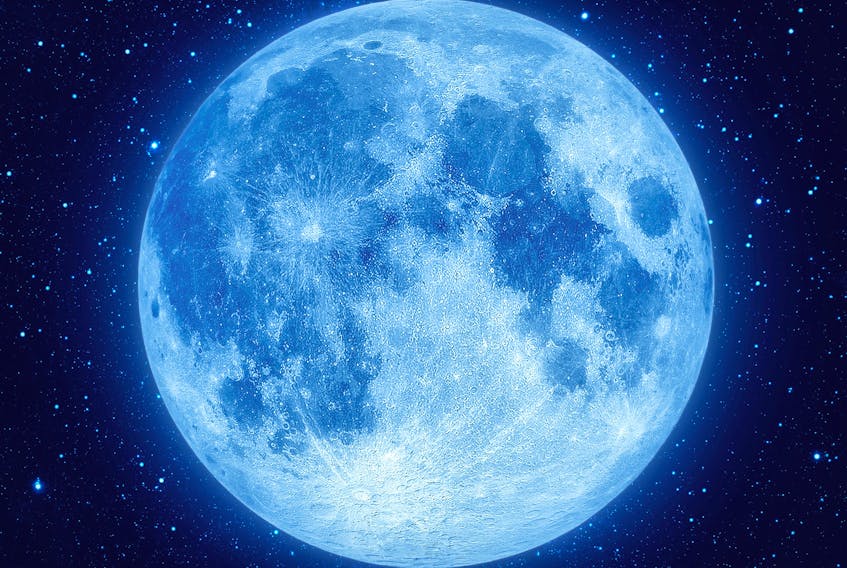
You’ve probably heard the phrase once in a blue moon.
But, what does it mean?
As with April’s full pink moon, the May 18 full moon is also associated with a specific colour, in this case, blue, though, disappointingly, it doesn’t refer to a moon that is actually blue in colour.
Due to the changing orbital alignments of the Earth and its moon, each season typically has three full moons. If, as with our current spring season, there are four full moons, the third full moon is referred to as a blue moon, though the moon will not, in fact, appear blue in colour.
Blue moons occur once every two to three years, giving rise to the oft-quoted phrase “once in a blue moon” It’s just another example of how some celestial phenomena makes their way into our everyday speech.
Events:
- May 18 - Full blue moon
- May 21-22 - Alignment of moon, Saturn and Jupiter, predawn.
- May 26 - Last quarter moon; moon at apogee
Something to watch for in the predawn hours of May 21-22 will be the alignment of the moon with the planets Saturn and Jupiter. If the weather co-operates and you have a clear view of the southern sky around 4 a.m. on either of those mornings, and if you can identify the teapot asterism in the constellation of Sagittarius-the Archer, you will spot the waning, gibbous moon just above the asterism. To the left of the moon will be the planet Saturn, and to the moon’s right, Jupiter, with the three objects in an almost perfect line with one another. Both planets will be bright enough to see with the naked eye.
In Greek mythology, Sagittarius is represented as a centaur – a figure with a horse’s lower body, but with the upper half of a human body – and is depicted as an archer drawing a bow and arrow. Incidentally, the constellation of Sagittarius sits between that of Scorpius – the Scorpion – and Hercules – the Giant. It is said that the centaur’s arrow is pointed directly at the heart star (Antares) of the scorpion in order to slay the scorpion, should it dare to attack Hercules.
Until next time, clear skies.
Glenn K. Roberts lives in Stratford, P.E.I., and has been an avid amateur astronomer since he was a small child. His column appears in The Guardian every two weeks. He welcomes comments from readers at [email protected].
- Read Glenn Roberts' May 1 column: ATLANTIC SKIES: A sprinkle of bright meteors with Eta Aquariid showers in May









